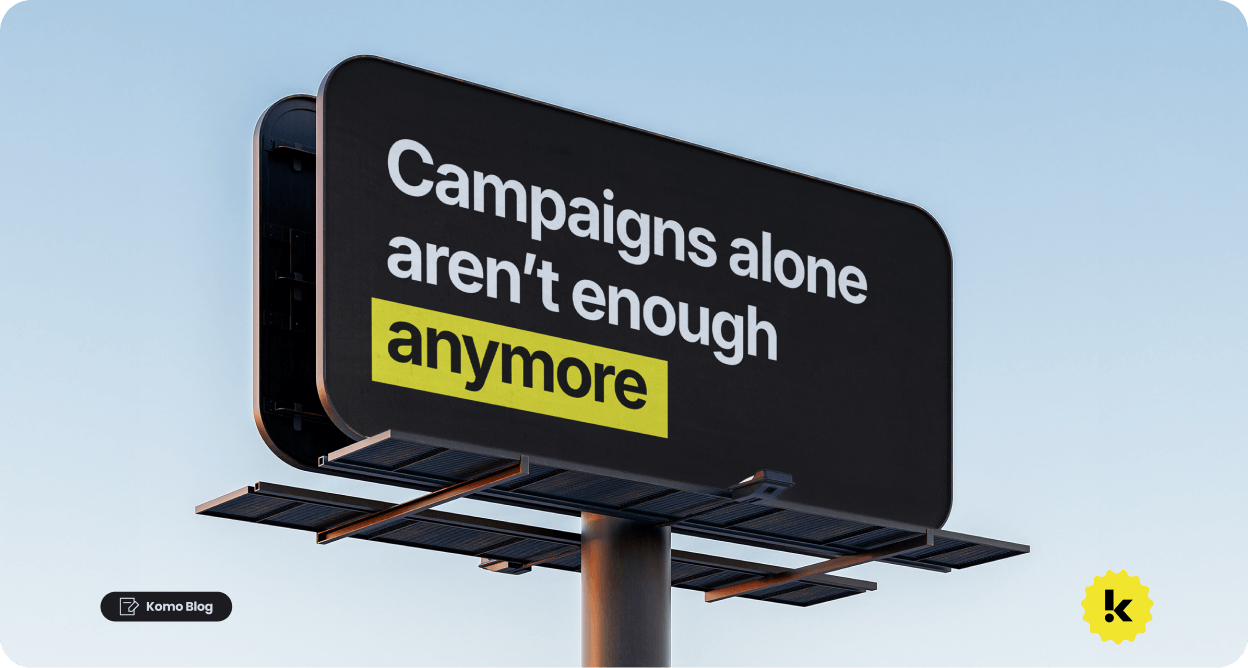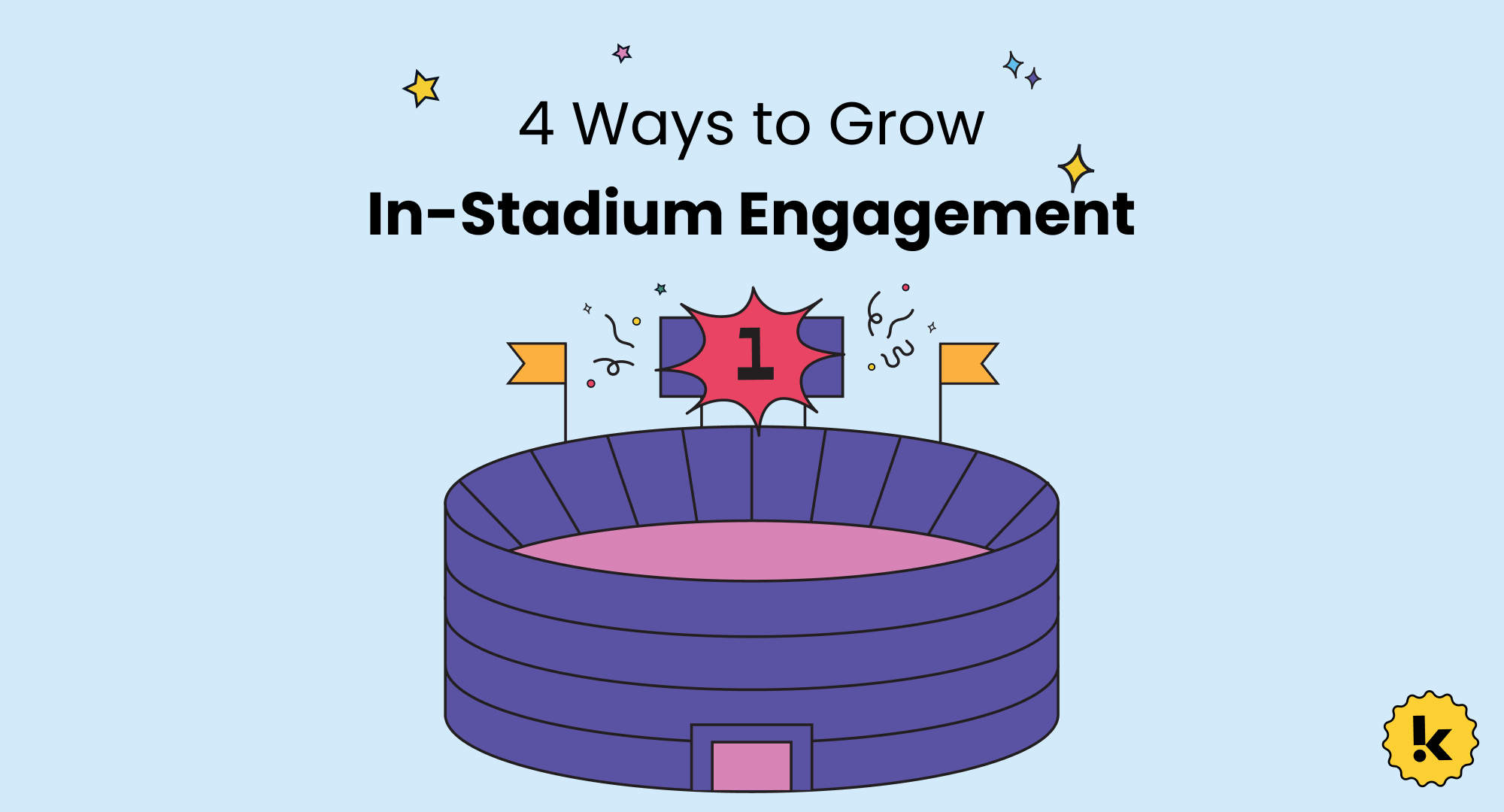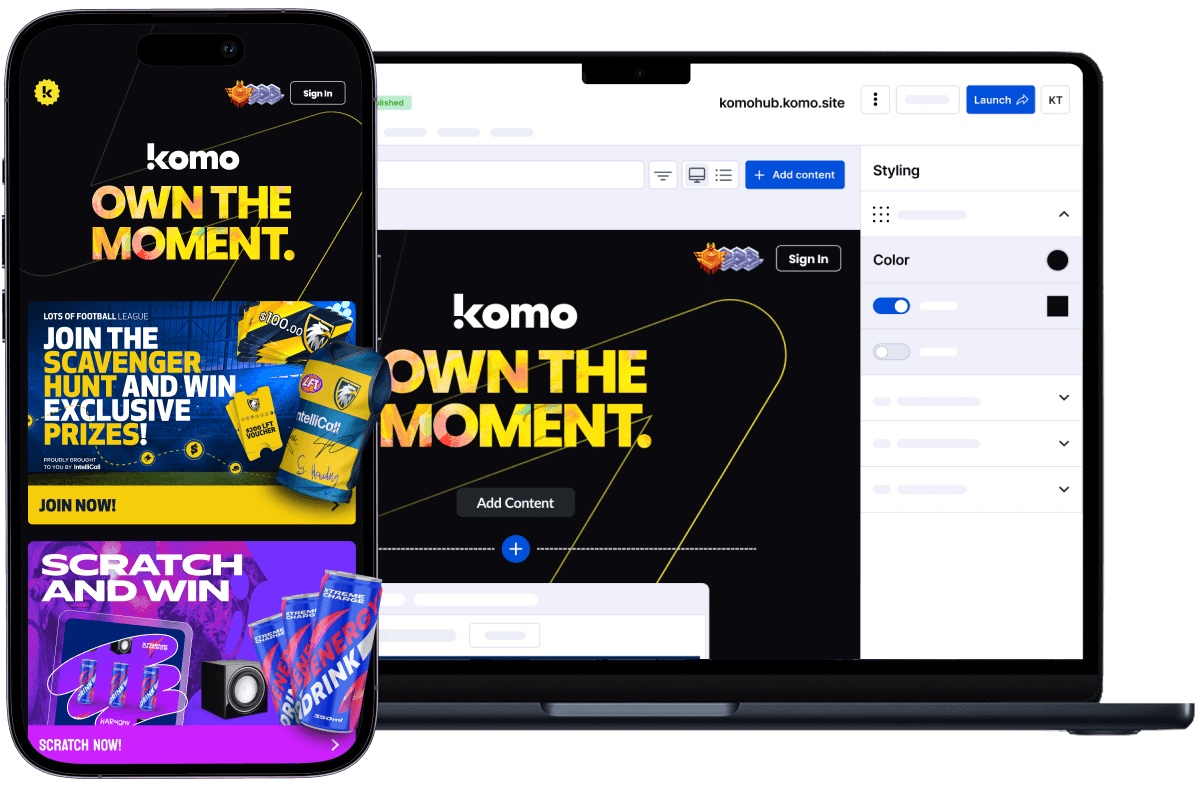If you feel like your marketing team is trapped in an endless loop of launching, reporting, and repeating—you're not alone.
Most teams are still running isolated bursts of engagement. Plan, build, launch, fade. Rinse and repeat. And honestly? It's showing in their results.
This campaign treadmill isn't just exhausting your team and eating your budget—it's leaving massive customer value on the table.
The hidden cost of one-off thinking
Traditional campaigns are designed to spike, not stick.
You plan for weeks, execute for days, then watch engagement evaporate as quickly as it arrived. No data carried forward. No engagement rhythm. No compounding impact. Just another line item in the post-mortem deck.
71% of CX leaders say customer loyalty is harder than ever to maintain. When attention is fragmented and switching costs are near zero, brief moments of visibility aren't enough to build the trust that drives lasting relationships.
Meanwhile, over half of B2B marketing teams are operating with skeleton crews—53% report having a small team (sometimes just one person) handling all of marketing. Add budget pressures (nearly half of marketers cite resource constraints as a top challenge), and you've got teams burning out trying to hit short-term goals with long-term hopes.
Sound familiar?
When every campaign starts from zero
Let's call it out: most engagement efforts are expensive resets.
Each campaign requires fresh creative, new landing pages, separate analytics setup. Your team rebuilds similar experiences over and over because nothing connects. The quiz you ran last quarter? That data lives in a spreadsheet somewhere. The preference insights from your holiday promotion? Lost in a different platform.
You're not building—you're rebuilding. Every. Single. Time.
This is why campaigns feel like such heavy lifts. Why "simple" activations take weeks to coordinate across tools, teams, and vendors. Why you spend more time managing the process than optimizing the experience.
The engagement drain
Every marketer knows the pattern
Launch a campaign → See initial engagement → Watch it fade → Scramble for the next idea → Repeat
But what's really happening underneath? You're training your audience to expect sporadic outreach. They engage when you show up, then forget you exist until your next blast.
No rhythm. No anticipation. No relationship.
Meanwhile, your competitors who've figured out continuous engagement are building deeper connections. Their customers expect regular touchpoints. They participate more because they know there's always something valuable coming.
The gap isn't just in tactics—it's in customer expectation.
The small team reality
If you're running marketing with a skeleton crew, the campaign treadmill hits even harder.
53% of B2B marketers report having a small team handling everything. When launching a single campaign requires weeks of coordination—briefing agencies, managing vendors, syncing data across platforms—there's no bandwidth for building long-term engagement.
You're stuck in reactive mode. Putting out fires. Hitting this quarter's numbers while knowing you're not building anything sustainable.
Nearly half of marketers cite resource constraints as their top challenge in executing engagement strategies. Translation: teams are drowning in operational complexity when they should be focused on customer connection.
The loyalty reality check
Customer loyalty is harder to earn and easier to lose than ever before.
71% of CX leaders confirm what you already feel—keeping customers engaged and committed is getting tougher. Switching costs are dropping. Options are multiplying. Attention spans are shrinking.
In this environment, occasional campaigns aren't just insufficient—they're almost invisible. Your customers interact with dozens of brands daily. If you only show up sporadically, you're background noise.
The brands that stay top-of-mind? They've moved beyond campaign thinking entirely.
The compound effect you're missing
Every isolated campaign is a missed opportunity for compounding value.
Think about it: when campaigns don't connect, customer data doesn't accumulate. Insights don't build. Personalization can't improve. You're essentially starting each engagement from scratch, losing all the intelligence you could have gathered.
Existing customers spend 67% more than new ones—but only if you know how to nurture them. Only if you remember their preferences. Only if each interaction builds on the last.
Most teams never get there because their tools and tactics aren't designed for continuity.
The question you need to ask
If you're nodding along to any of this, the question isn't whether your current approach is working.
The question is: what could you build if every engagement connected to the next?
What if launching a new experience took minutes instead of months? What if customer preferences from one touchpoint automatically informed all future interactions? What if engagement actually compounded instead of constantly resetting?
Some teams are already there. They've stopped playing the campaign game and started building engagement systems.
The difference in results? Dramatic.
What's possible
Ready to see where you stand—and what's possible next?
- Take the 2-minute Engagement Maturity Assessment - Discover your current level and identify your biggest opportunities
- See How Leading Brands Evolved - Real examples of teams who made the shift from campaigns to systems
- Engagement Maturity Model - Learn more about how to scale your engagement maturity
You don't have to stay stuck on the campaign treadmill.
But you do have to decide: keep rebuilding, or start building something that lasts?
Ready to see where you stand and what's possible next? Take our Engagement Maturity Assessment to discover your current level and identify your biggest opportunities.

.png)

-1.png)
